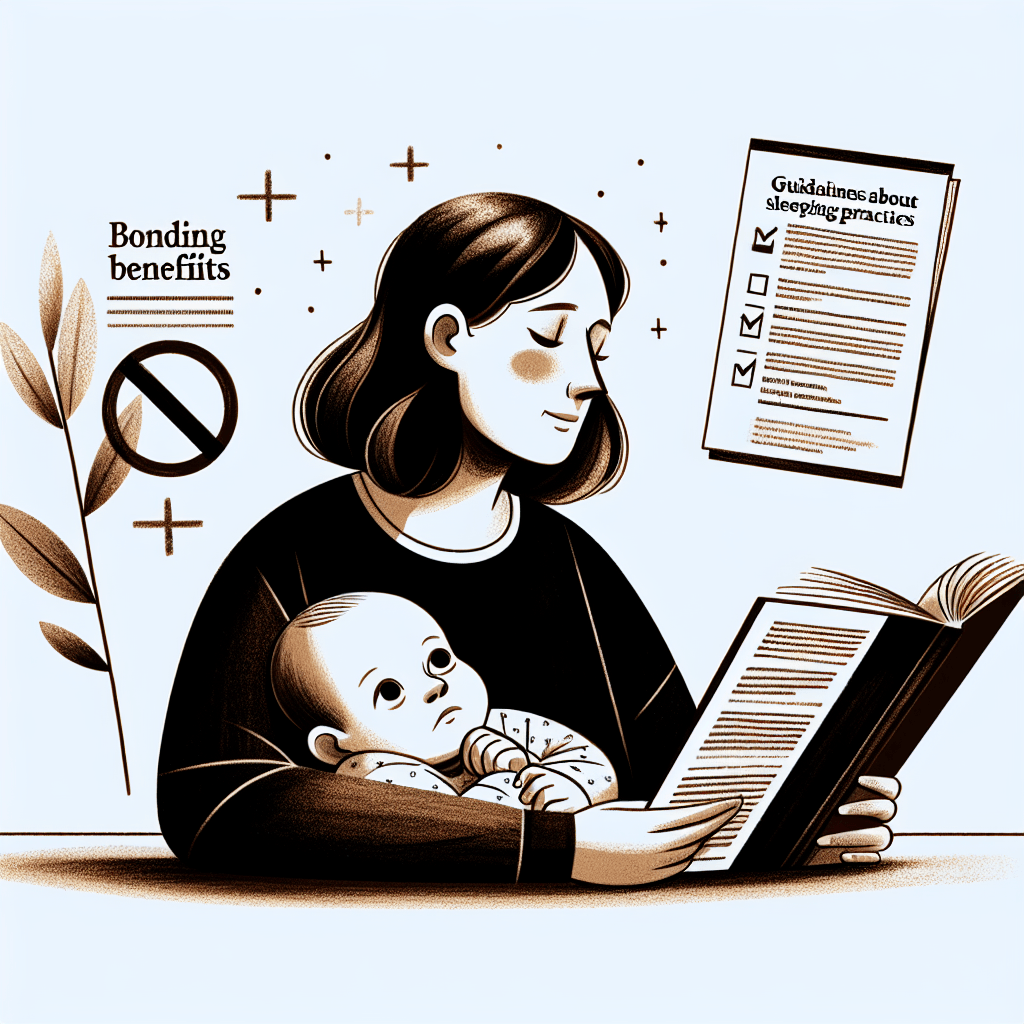Sleeping in the same bed with the baby: a good idea or not?
Contents:
- Introduction
- The advantages of sleeping in the same bed
- The Risks Associated with Sleeping in the Same Bed
- Experts' recommendations
- The Safe Alternative: Co-sleeping
- Tips for Parents
- Conclusion
Introduction
With the arrival of a newborn, parents are faced with many important decisions, one of which is where the baby will sleep. Many cultures encourage the idea of co-sleeping with your baby, but this practice is shrouded in different myths and realities. Let's take a look at the benefits and risks of co-sleeping so you can make the best decision for your family.
The advantages of sleeping in the same bed
Sleeping in the same bed as the baby may seem ideal for moments of intimacy and attachment between parent and child. Breastfeeding becomes more accessible at night, when the baby is right next to the mother. Also, babies who sleep in the same bed as their parents tend to have a more restful sleep and wake up less often.
In addition, some parents feel that they can monitor their baby better if they are in the same bed. This closeness can reduce parents' anxiety, giving them the comfort that their little one is safe and close at hand for whatever needs they may have throughout the night.
The Risks Associated with Sleeping in the Same Bed
Despite the obvious advantages, we cannot ignore the risks that come with sleeping in the same bed. The main danger is the risk of suffocation or SIDS (sudden infant death syndrome). The adult's bed is not designed with the safety of the baby in mind and there is a risk of the baby getting caught between the pillows, being covered by the blanket or even being crushed by one of the parents while sleeping.
Another aspect to consider is the quality of your sleep. Although some children may sleep better with their parents, others may become restless and have poor quality sleep. Parents' sleep can also be disturbed by the baby's movements and sounds.
Experts' recommendations
Most experts, including the American Academy of Pediatrics, recommend that babies sleep in the same room as their parents for the first 6-12 months, but on a separate surface designed specifically for them, such as a crib or bassinet.
The Safe Alternative: Co-sleeping
An increasingly popular alternative is co-sleeping, which allows parents to sleep close to the baby without sharing the same bed. Co-sleepers are cots open on one side that can be attached to the parents' bed, making it a safe and comfortable option for both sides. This helps to improve night feeding and create a strong bond between parents and baby, while reducing the risks associated with co-sleeping.
Tips for Parents
If you decide to co-sleep with your baby, it is crucial to follow certain safety measures:
- Remove all pillows and blankets from near the baby to prevent the risk of suffocation.
- Make sure the bed is positioned in such a way that the baby cannot fall.
- Avoid sleeping together if you are extremely tired, if you have consumed alcohol or drugs that can affect your sleep.
- Monitor the temperature in the room to prevent the baby from overheating.
Conclusion
The decision to sleep or not in the same bed as the baby is a personal one and should be made taking into account all the information and recommendations of experts. Whatever your choice, your child's safety and comfort are most important. Consider the alternatives available, such as co-sleeping, to find the solution that works best for your family. If you have any concerns or questions, don't hesitate to speak with a child health professional who can guide you through this beautiful and challenging journey of raising a child.














































































































































